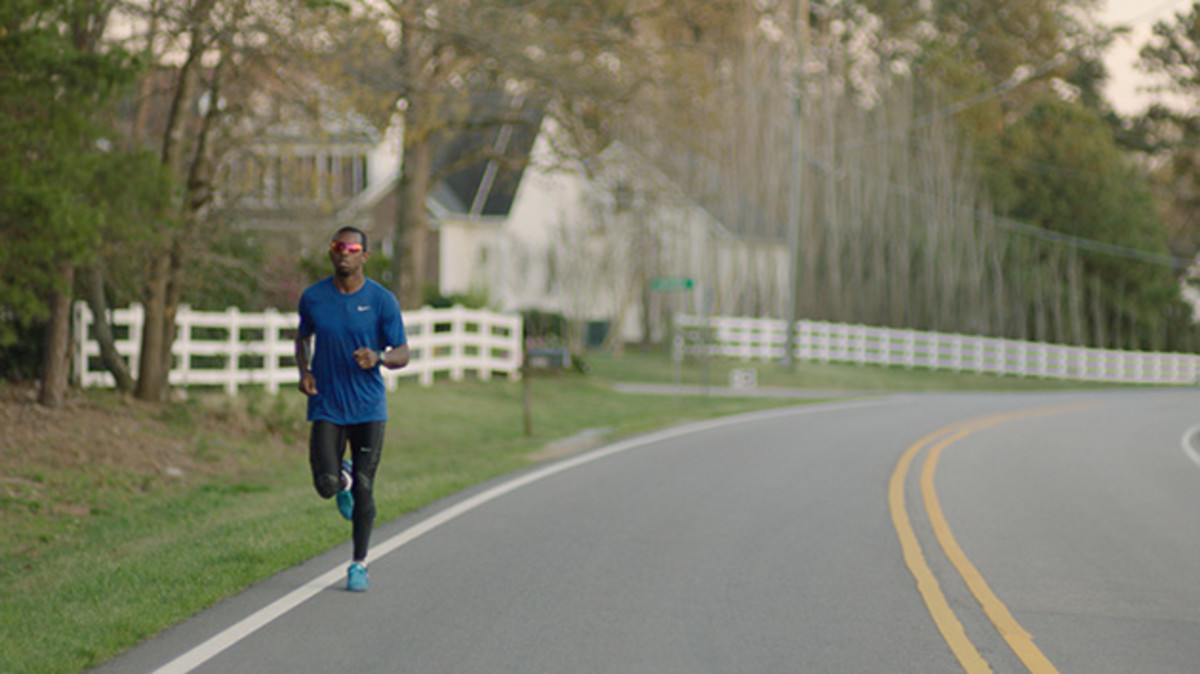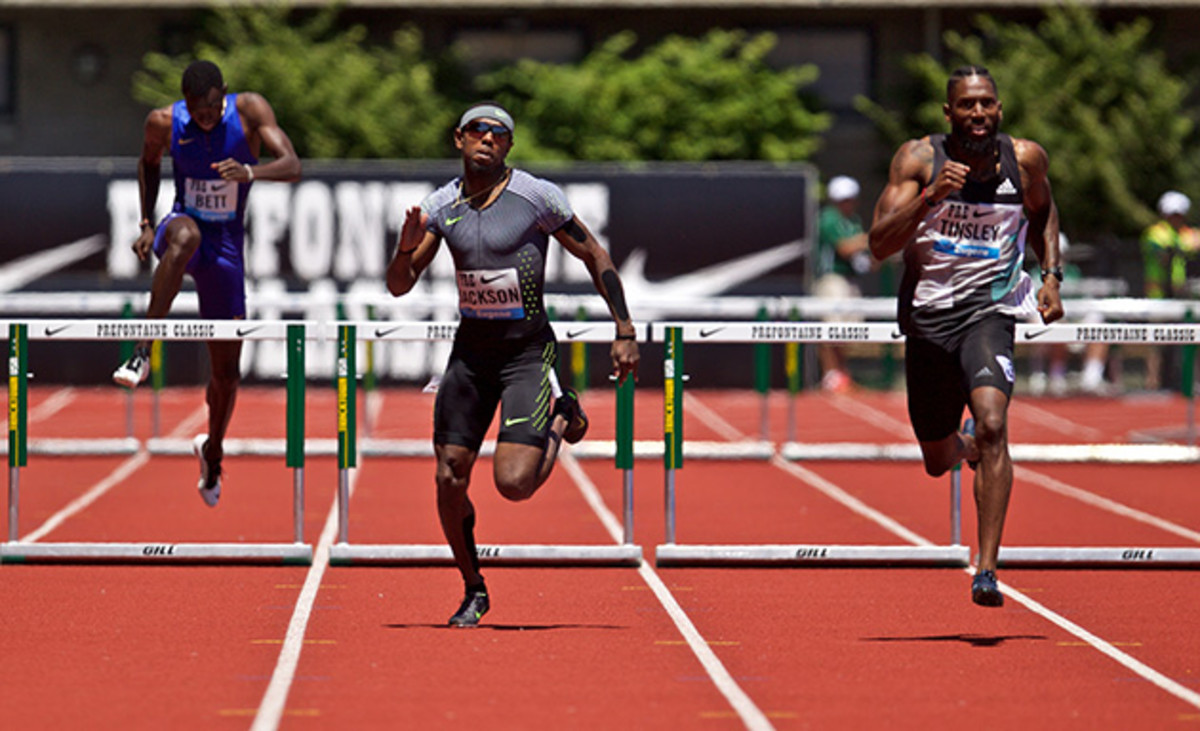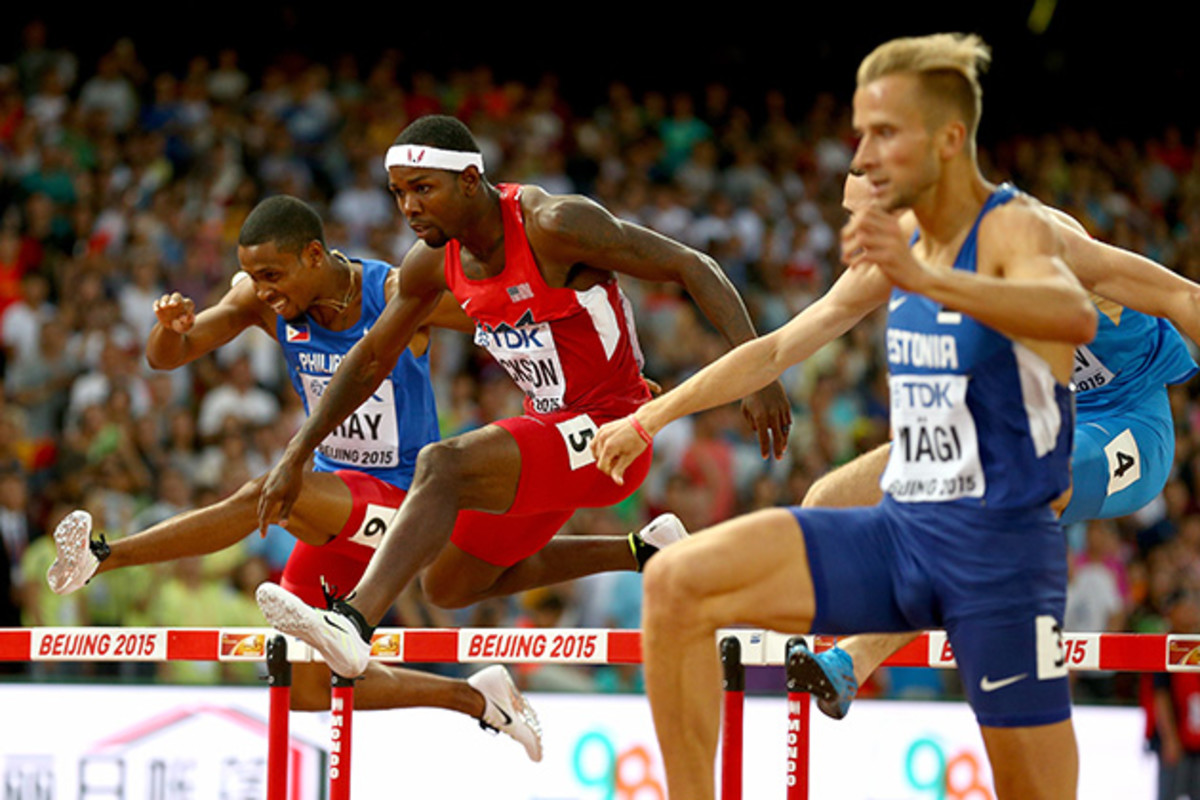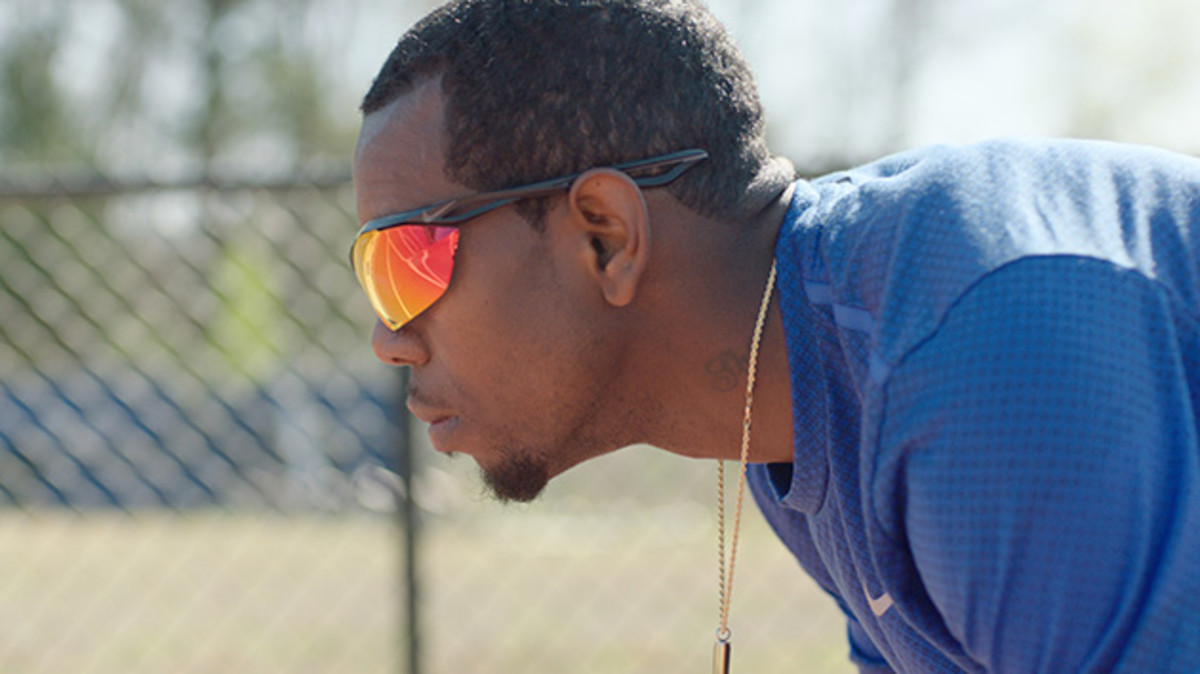Batman in training: Bershawn Jackson's 400 meter hurdles workout

For someone who makes a living flying over hurdles, USA track athlete and 2008 Olympic bronze medalist Bershawn"Batman" Jackson doesn’t spend too much time training with them. There are simply too many other ways he prepares his body for the intense 400 meters of hurdling he does in competition.
“Every day is something different,” he says in between workouts ahead of the U.S. Olympic Team Trials. With coach George Williams planning everything for him, as he has for the past 13 years, Jackson gets a mix of speed, endurance, strength and, of course, a touch of hurdles.

“He knows me and knows where I need to be,” Jackson says. “We do my regimen on how I look and how I feel.”
The hurdle practice comes twice a week, but the on-track workouts seem endless, with Jackson spending 90% of his training time on the track. His weight room work includes lifting exercises focused on hamstrings, legs and core.
As one of the shortest top-flight hurdlers in the world at only 5'8", Jackson says he’s had to put a premium on strength to handle the 10 hurdles in the 400 meters. “I was born fast,” he says. “That’s genetics. But by hurdle eight, nine and 10 I get tired. I gotta hold my 15-stride pattern. Any small error and I’m done.”
• Ryan Hall set to run seven marathons in seven days on seven continents
As a flat 400 meter runner you can focus on just speed and endurance, he says, but with that 15-stride pattern never far from his mind, he needs something more. “A typical workout for me is more strength to hold that stride pattern,” he says. “Being small, I’m behind the eight-ball. I have to be extremely strong.”

So Jackson trains like an 800 meter runner, knowing his natural speed can take care of only so much. Gaining extra strength requires a mindset that pushes beyond thresholds. “We have this one workout and we hate it to death,” Jackson says. “800 hurdles. It is extremely hard. It is more a mental aspect, like, okay this hurts like hell, but it is a mental workout. It gets you past that threshold and keeps you running when tired. When in races, it gets you through the pain.
• Innovation in Hydration: How CamelBak became a military essential
“When we have 800 hurdle days it is the worst day, but you gotta set your mind to: ‘This is what it takes to be a champion’ and persuade yourself to run through hard. It hurts.”

When Jackson does hit the hurdles he spends one day on technique and one day on rhythm. As a big race nears, though, they’ll up his workouts on the hurdles to three or four days a week, mixing in some speed and strength training along the way, before tapering it down as the meet approaches. On a rhythm day, expect the three-five-nine workout of three hurdles and then five, followed by nine. The technique days generally keep Jackson on the straight-aways.
• Summertime Sweat: Kitesurfing is the new way to ride waves to a fitter body
Now at age 32, Jackson says his training has changed. “It is the same kind of concept, but it is definitely different,” he says. “Getting older, you have to learn.” Proud of his work ethic keeping him at the top of his game—“I am a major competitor; I come to work”—he admits that he’ll often train too hard and injure himself. “I want to be successful so bad I sometimes beat myself,” he says. So to counteract his natural tendency to never quit, his workouts build in more time for recovery and offer fewer repetitions than they once did. He also doesn’t have back-to-back hard days.

“At one point in my career, I could sustain three to four days [in a row] of hard work,” he says. “Now I do break down. Being so mature in the sport and being a student of my event, I don’t need all that pounding.”
With the training behind him, the race day preparation is all about creating “tunnel vision” on his goal. He’ll strap on his Nike Vision racing glasses to help block out everyone around him, even if he likes knowing they are there. His favorite lanes—four and six (for the wide turns) keep him “in the middle, in the action.” And that’s when the God-given speed and intense strength training take over. Fifteen strides at a time.
Tim Newcomb covers sports aesthetics—stadiums to sneakers—and training for Sports Illustrated. Follow him on Twitter at @tdnewcomb.
